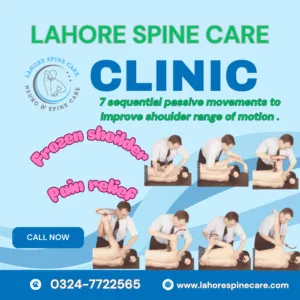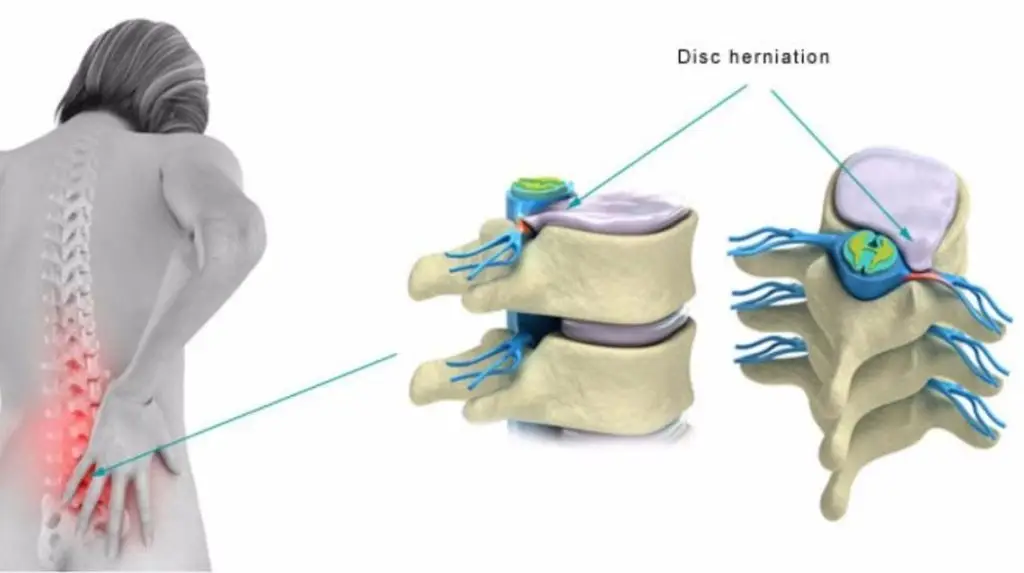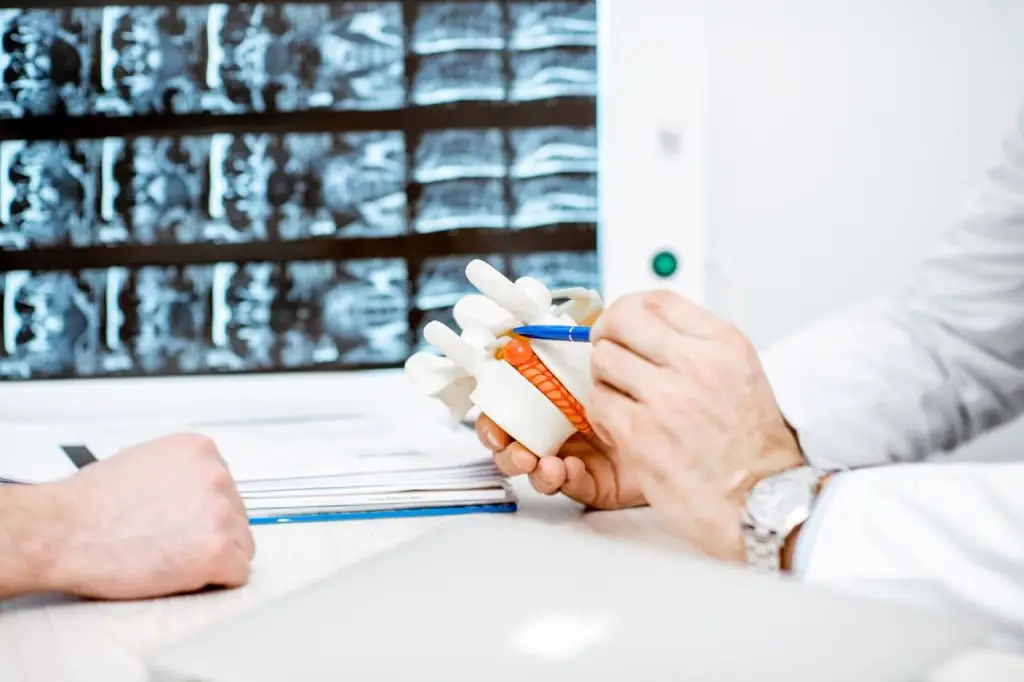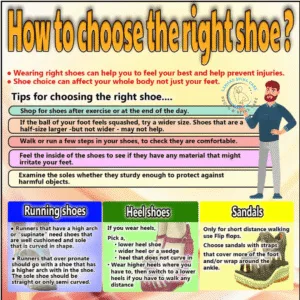
LAHORE SPINE CARE
Disc protrusion, commonly known as a herniated or slipped disc, is a condition that can cause significant discomfort and disruption to daily life. Understanding what disc protrusion is, recognizing its symptoms, and knowing how to seek effective treatment can make a big difference in managing and overcoming this condition. In this blog, we’ll explore what disc protrusion entails, how to identify its symptoms, and the best ways to find relief.

Table of Contents
ToggleWhat is Disc Protrusion?
The spine is made up of a series of vertebrae stacked on top of each other, with intervertebral discs sitting between them. These discs act as shock absorbers, cushioning the bones and allowing for flexibility in the spine. Each disc has a tough outer layer called the annulus fibrosus and a gel-like center known as the nucleus pulposus.
Disc protrusion occurs when the annulus fibrosus weakens or tears, causing the nucleus pulposus to push out and protrude through the weakened area. This bulging disc can press on nearby nerves, leading to pain, numbness, and other symptoms depending on the location of the protrusion.

Recognizing Symptoms of Disc Protrusion
Symptoms of disc protrusion can vary widely depending on which part of the spine is affected (cervical, thoracic, or lumbar). Here’s a breakdown of common symptoms based on the location:
Consulhttps:/book-appointment/t Now

1. Cervical Disc Protrusion (Neck Region)
- Neck Pain: Persistent or severe pain in the neck.
- Radiating Pain: Pain that travels down the arms, possibly reaching the hands.
- Numbness and Tingling: Sensations of numbness or tingling in the arms or fingers.
- Weakness: Muscle weakness in the arms or hands.
- Limited Mobility: Reduced range of motion in the neck.
2. Thoracic Disc Protrusion (Upper and Mid-Back Region)
- Mid-Back Pain: Dull or sharp pain in the upper or mid-back.
- Chest Pain: Pain that might be mistaken for chest-related issues.
- Numbness: Sensations of numbness or tingling in the chest or abdominal area.
- Difficulty Breathing: In rare cases, difficulty breathing or a feeling of tightness in the chest.
3. Lumbar Disc Protrusion (Lower Back Region)
- Lower Back Pain: Persistent lower back pain that may worsen with movement.
- Sciatica: Pain that radiates down the leg, often reaching the foot (sciatica).
- Numbness and Tingling: Sensations in the buttocks, legs, or feet.
- Weakness: Muscle weakness in the legs or feet.
- Difficulty Sitting or Standing: Discomfort when sitting for long periods or standing for extended times.
- Read More


Seeking Effective Treatment
If you suspect you have a disc protrusion, it’s important to seek medical advice for proper diagnosis and treatment. Here’s a step-by-step guide to help you navigate the process:
1. Consult a Healthcare Professional
- Primary Care Physician (PCP): Start with a visit to your PCP, who can evaluate your symptoms and provide initial treatment options.
- Specialists: Depending on your condition, Lahore Spine Care bring together the knowledge of Skilled and qualified Physiotherapists, Nutritionists, Neurologists, Neurosurgeons, Pain management specialists, and Rehabilitation therapists.

2. Diagnostic Testing
- Physical Examination: Your doctor will perform a physical exam to assess your range of motion, strength, and reflexes.
- Imaging Tests: MRI or CT scans may be ordered to visualize the extent of the disc protrusion and identify which nerves are affected.
- Electrodiagnostic Studies: Tests like electromyography (EMG) can assess nerve and muscle function.
3. Non-Surgical Treatment Options
- Medication: Over-the-counter pain relievers (e.g., ibuprofen) or prescribed medications for pain and inflammation.
- Physical Therapy: Targeted exercises to strengthen the muscles supporting the spine and improve flexibility.
- Lifestyle Modifications: Ergonomic adjustments to work and home environments, weight management, and adopting proper lifting techniques.
- Alternative Therapies: Acupuncture, chiropractic care, and massage therapy might offer symptom relief for some individuals.
Subscribe our YouTube channel
4. Surgical Treatment Options
If conservative treatments do not provide relief, or if there is significant nerve damage or loss of function, surgery may be considered. Surgical options include:
- Discectomy: Removal of the protruding part of the disc to relieve pressure on the nerve.
- Laminectomy: Removal of part of the vertebra (the lamina) to access and relieve pressure on the nerve.
- Spinal Fusion: Joining two or more vertebrae together to stabilize the spine after disc removal.
5. Rehabilitation and Prevention
Post-treatment, whether surgical or non-surgical, involves a period of rehabilitation. Physical therapy and exercise play a crucial role in recovery and prevention of future issues. Additionally, maintaining a healthy lifestyle with regular exercise, proper posture, and ergonomic practices can help prevent recurrence.

Conclusion
Disc protrusion can be a challenging condition, but understanding its symptoms and treatment options can empower you to seek the appropriate care. Whether you’re managing the condition with conservative measures or considering surgical intervention, working closely with healthcare professionals and following a tailored treatment plan are key to recovery and long-term spinal health.


If you’re experiencing symptoms of disc protrusion, don’t hesitate to reach out to a medical professional. Early diagnosis and intervention can make a significant difference in your journey to relief and recovery.


how to choose the right shoe for spine health

Celebrating World Physiotherapy Day 2025: Advancements and Innovations in Rehabilitation

Tehmina Arshad: Expert Speech and Language Pathologist

Independence Day of Pakistan 2025—A Celebration of Freedom and Unity

Exploring the Impact of Research Publications by Dr. Ejaz Danish: A Physiotherapist’s Contribution to the Field
LAHORE SPINE CARE is proudly powered by WordPress